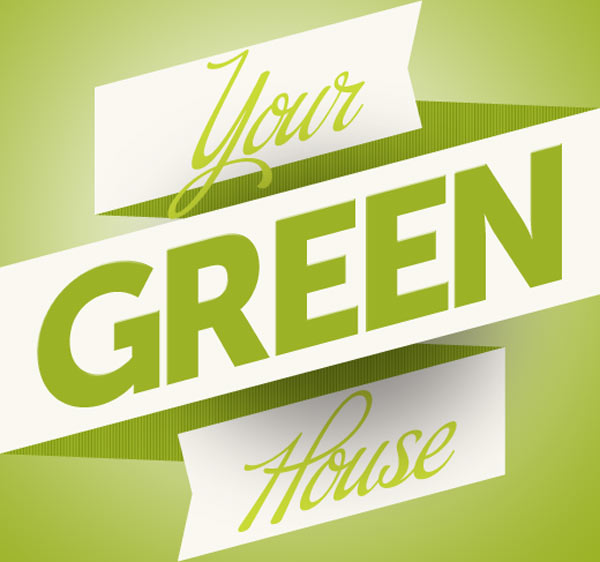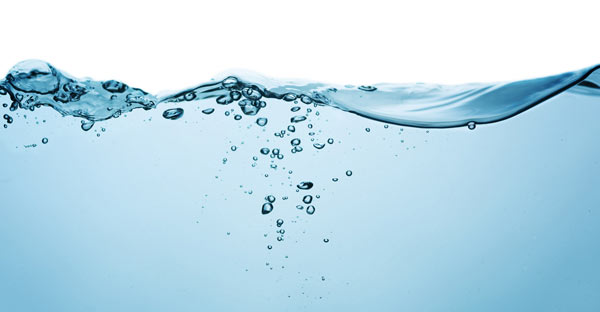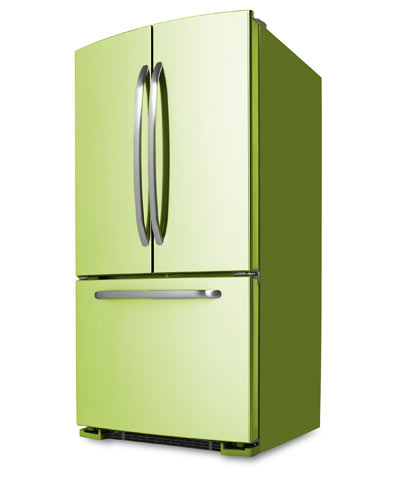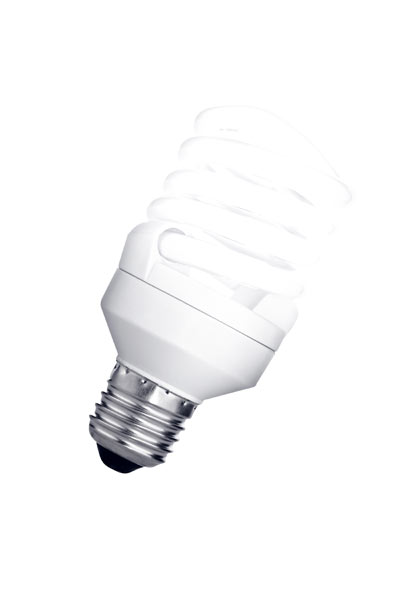
And let’s not even begin to discuss what our handheld devices are capable of!
But with advancements in science and technology have also come a great amount of energy expenditure and waste. Over the past decade, an emphasis on “green” or “sustainable” living has been infiltrating our way of thinking. It’s now the norm to use recyclable grocery bags, and quite a bit of paper mail is now delivered via email instead. Within the last few years, maintaining a green home has become increasingly popular. Unfortunately, many people want to get in on the green home craze but still think this lifestyle is only for those who bring home a big paycheck.
“There are several steps anyone can do to make their home more green or sustainable,” says founding member of the Marion County Branch of the United States Green Building Council (USGBC) Charlie Thoman. The USGBC specializes in advocating and educating people about energy-saving techniques in their homes and businesses. Charlie is the senior project manager at K.P. Studio Architect in Ocala and is a LEED-accredited (Leadership in Energy and Environmental Design) professional. He stresses that there are ways people can be more green without having to spend a fortune or make major renovations. And more and more companies and manufacturers are offering energy-efficient and green products. Couple that with the fact that you can get rebates and credits once you do go green and it doesn’t make sense not to.

Water, Water Everywhere
During one of Florida’s famous summer downpours, it’s easy to overlook the need to conserve water. Unfortunately, not all of Florida’s water is usable, and, while you may never leave home without an umbrella in July, during the winter, you may not see a drop of rain for weeks.
“We are lucky to have an abundance of water around us, but it’s quickly becoming a rare commodity,” says Charlie.
One of the simplest things you can do outside your home to reduce water usage is to check your current irrigation system for any leaks. It’s also important to know the watering restrictions in your area.
If you have purchased a new home or are planning to re-landscape your current home, consider native plants. Drought-resistant plants that are native to Central Florida won’t need to be watered as often, thus saving on your water usage. Or, consider replacing greenery altogether with something unique like a rock garden or patio.
“Something else to consider with elaborate landscaping is the fertilizers and products used on your plants,” says Charlie. “Chemicals in fertilizers wash off and wind up back in our water supply. If you use native plants that can easily grow here, you won’t need fertilizers.” Of course, Charlie says, if you have to use fertilizer, the best option is organic.
If your landscaping does require consistent watering, consider rain harvesting. Water from your gutters can be stored in rain barrels and used to water plants. It’s inexpensive and doesn’t only conserve water but will also save you money on your next utility bill.
Other Water Saving Techniques
Don’t let water run while you are brushing your teeth.
Don’t rinse dishes before loading them in the dishwasher. Newer models can handle grimier dishes.
Only run the washing machine or dishwasher when you have a full load.
Use a broom to clean your driveway instead of a hose.
Replace showerheads in your home with water-efficient ones.
Make sure all faucets, inside and out, are not leaking, and turn them all the way off when not in use.
The Green Machines
 Appliances such as washing machines and dishwashers have made household chores a no-brainer. With the flick of a switch, you’re good to go. But would you feel so apt to freely run these miracle machines if they ran on money? That is basically what they are doing. Older versions of appliances utilize a great amount of energy that shows up on your electric bill every month. Refrigerators and air conditioning units are the biggest culprits.
Appliances such as washing machines and dishwashers have made household chores a no-brainer. With the flick of a switch, you’re good to go. But would you feel so apt to freely run these miracle machines if they ran on money? That is basically what they are doing. Older versions of appliances utilize a great amount of energy that shows up on your electric bill every month. Refrigerators and air conditioning units are the biggest culprits.
“The best option is to go with an Energy Star-rated appliance,” says Charlie. Energy Star is the joint program between the U.S. Environmental Protection Agency and the U.S. Department of Energy. Appliances achieve an Energy Star rating when they pass energy-efficient guidelines set by these two groups.
“It’s worth the initial extra money for a couple of reasons,” says Charlie. He explains that electric companies often offer rebates for homes with Energy Star-rated appliances, and the product uses much less energy than traditional appliances, so there is a savings on the utility bill. And newer models are of a higher quality, meaning they won’t need to be replaced as quickly.
If new appliances aren’t in your near future, there are plenty of other energy-saving techniques that will add up in the long run. Implementing just a few of these can save you hundreds of dollars a year on your utility bill and are also better practices for the environment.
Check your ductwork. If there are leaks in the heating and cooling ducts in your home, you may as well just open a door or a window while the unit is running. Properly sealing and insulating all ducts can improve the efficiency of your system by 20 percent.
Be sure to change air filters regularly to improve airflow efficiency. Filters should be changed every three months but should be checked every month. If they are dirty, change them sooner.
Install a programmable thermostat. The City of Ocala offers a $25 rebate for homes with programmable units and claims that they can save customers up to $180 a year on their electric bills.
Put a timer on your water heater if you are not going to need hot water throughout the day. There’s no reason to keep heating water that won’t be needed for several hours.
Consider a windmill. Small windmills can generate enough energy to run an outlet or two and are also great green selling features.
For a complete list of rebates from the City of Ocala and many other energy-saving tips, visit ocalafl.org. Check your electricity company’s website for rebates and tax incentives.
For self-proclaimed “green geeks,” check out some of the apps available on your smartphones that can control your home thermostats even when you are not there, ensuring that you will come home to just the right temperature every time. Also check out “The Nest,” a smart thermostat that learns your patterns and adjusts itself to your liking. For more information, visit nest.com.
The Solution is in the Solution
Everyone loves the look of sparkling silverware and the fresh scent of just-laundered clothes. However, though your intentions are admirable, you may be making your home a more harmful environment every time you clean. Many cleaning products contain chemicals and fragrances that are toxic if ingested or inhaled. According to the Organic Consumers Association, cleaning products were associated with nearly 10 percent of calls to the U.S. Poison Control Centers, most of them relating to children who accidentally ingested these products.
A number of symptoms are related to exposure to cleaning chemicals, including skin irritations, watery or itchy eyes, respiratory problems or even mild burns. And while these symptoms may go unnoticed or be ignored, the long-term effects of this type of chemical exposure can lead to more serious chronic issues.
And don’t think that if you don’t experience symptoms that you are safe. Once you pour that cleaner down the drain or your washing machine empties after a cycle, those chemicals are sent to a water treatment plant before being released back into the environment via waterways. Many chemicals do break down to harmless substances; however, some, such as alkylphenol ethoxylates (APEs), which are used in some detergents and cleaning products, do not readily break down in water or soil. APEs mimic the hormone estrogen and can lead to a whole host of problems for the fish that swim in these waters and the humans who consume them.
With a recent push for more green products by consumers, many manufacturers have introduced green versions of their regular products, and many organic and health food stores carry a wide variety of organic cleaning products.
“Green versions of cleaning products are a great alternative,” says Charlie. But another, somewhat less-expensive option, is to make cleaning products yourself out of everyday solutions you probably already have.
“Everyone’s got baking soda, vinegar and water,” he says. “You can make perfectly adequate cleaners that are better for the environment and you and your family.”
Make Your Own Green Cleaners
Use baking soda and a wet sponge on bathroom tile, porcelain surfaces and kitchen counters. Sprinkle in some kosher salt for grimier surfaces.
Mildew, stains and streaks can be fought off with lemon juice or vinegar and some elbow grease!
Combine 2 cups of water, 3 tablespoons liquid soap and 20 to 30 drops of tea tree oil for a homemade disinfectant.
Two tablespoons of white vinegar combined with a gallon of water can replace window cleaners. Use newspaper instead of paper towels to avoid streaking.
Use club soda on stains. The carbonation brings the spill to the surface, and the salt in the soda helps avoid staining.
For a green “spot cleaner” combine ¼ cup liquid soap with 1⁄3 cup water in a blender until foamy. Spray on the stain and rinse with vinegar.
Mop hardwood floors with a solution of ¼ cup white vinegar and 30 ounces of warm water.
Oven cleaners contain some of the most toxic ingredients. Make a paste of baking soda and water and let sit overnight. Scrub thoroughly the next day.
For clogged drains, pour ½ cup baking soda followed by ½ cup vinegar down the problem drain and cover tightly. The vinegar and baking soda will react and begin to fizz. This should help break up the clog. Follow by flushing the drain with a gallon of boiling water.
For more homemade cleaning solutions, visit thedailygreen.com.
Let There Be Light!
 Every child has heard their mother remind them to shut off the lights when they leave a room. If it’s not standard practice at this point, make it one! One of the easiest energy-saving techniques is to simply shut off lights when they’re not in use. Charlie recommends another energy-efficient modification: upgrading to incandescent bulbs with compact fluorescents (CFL).
Every child has heard their mother remind them to shut off the lights when they leave a room. If it’s not standard practice at this point, make it one! One of the easiest energy-saving techniques is to simply shut off lights when they’re not in use. Charlie recommends another energy-efficient modification: upgrading to incandescent bulbs with compact fluorescents (CFL).
“Upgrading your light bulbs is something easy to do and can save money and energy,” says Charlie. “They used to be much more expensive when they first came out, but they are much less expensive now. They last longer and don’t drain as much power,” he says.
LED lights are also a great alternative. They are a little more expensive, but the savings is definitely noticeable.
Another option is to put dimmer switches on your bulbs and to keep them lit only as much as you need.
Of course, you can also use the most powerful light source at our disposal: the sun! Installing solar panels on the roof can not only save money on the electricity bill, but it also adds value to your home.
“Solar panels used to be expensive, but the cost has come down tremendously, and newer technology has made them stronger, requiring less maintenance,” says Charlie. And while you can spend the extra money for panels that can actually rotate to capture the maximum amount of sunlight, Charlie stresses that that is not the only option.
“You don’t have to power your whole house, you can purchase small ones that are on the ground and are capable of powering an outlet or the water heater,” he says.
But what about when you want to keep the sun’s heat out? If you are building a new home, Charlie recommends investing the extra money for low-E (low emissivity) windows that will reflect heat.
Applying window films is another great technique to block the sun’s heat and keep cooling costs down, which, according to the U.S. Department of Energy, comprises 45 to 50 percent of the average home’s electric bill.
“New window films, such as the 3M™ Window Films, dramatically reduce cooling costs up to 30 percent,” says David Taylor, president and CEO of Solar Controllers in Ocala. “The installation is easy and performed in less than a day and reduces infrared heat up to 97 percent,” he says.
One of the original concerns about applying window films was that they were tinted, but the 3M™ Window Films are clear, thus providing in-home comfort with a dramatic cut in cooling costs.
“It’s a very realistic payback,” says David. “Not just for your cooling costs but to preserve your floors, drapes and carpets from fading.”
Going green in your home does not mean you have to completely remodel. Most professionals recommend looking at your budget and investing a small amount each year into something different.
“Of course, the more you invest, the quicker your rate of return, but it’s not only about the money, it’s about your health and the environment, too,” says Charlie. He stresses that every little thing you do makes a difference both to your wallet and Mother Earth.
Interested in going “green?” Check out some of these websites for home renovation ideas and tips and tricks for protecting the environment.
U.S. Green Building Council usgbc.org
Central Florida Chapter of USGBC usgbcheartfl.org
Regreen regreenprogram.org
Energy Star energystar.gov
Sources: thedailygreen.com, organicconsumers.org, ocalafl.org






